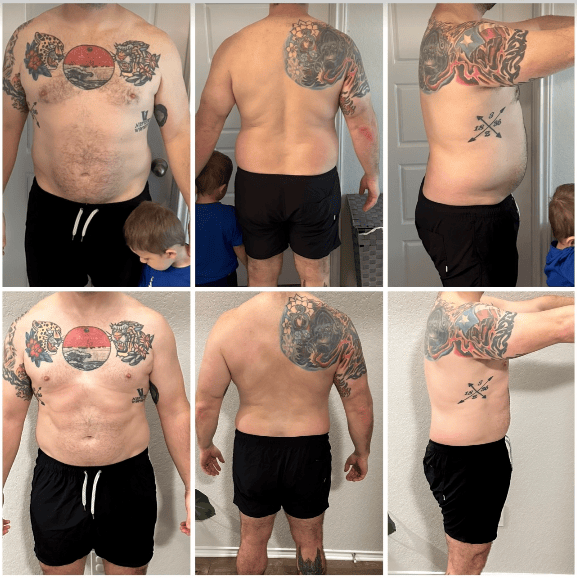There are many different types of exercise. You’re probably familiar with cardio and weight lifting, but what about aerobic and anaerobic exercise? Both of these workouts are good for you and will help you get into shape, along with aproper meal plan, although they differ quite a bit.
If you’ve been hearing about anaerobic exercise and want to see what it’s all about or are wondering just how different it is from aerobic exercise, then you’re in the right place!
What Is Aerobic Exercise?
Aerobic workouts are the most common types of workouts. They’re what most people picture when they hear the word “exercise.” Anaerobic workout lasts for anywhere from half an hour to an hour or longer, depending on the exercise and your personal preferences.
Another word for aerobic exercise is “steady state cardio” because it has you doing workouts that keep your heart rate at a steady yet slightly elevated pace for a period of time. Examples of aerobic exercises include jogging, fitness workouts like Zumba or yoga, brisk walking on a treadmill, and biking or cycling.
What Is Anaerobic Exercise?
On the other hand,anaerobic exercise consists of doing high-intensity workouts for a short period of time. With this form of exercise, you’re getting your heart rate up high, more so than with an aerobic workout, but this makes it difficult to keep your workout going for long, so it only lasts for around ten to fifteen minutes at a time.
The word “anaerobic” means “without oxygen.” Since you’re doing a very intense workout, your body ends up needing more oxygen than it can take in, which is why you can only keep up the intensity for a short length of time. As a result, the lactic acid will build up in your muscles throughout the workout, leading to larger, more defined muscles over time.
Some examples of anaerobic exercise include HIIT (high-intensity interval training), cardio, weightlifting, and even sprinting.
Do Aerobic and Anaerobic Exercise Have Anything in Common?
Despite their differences, aerobic and anaerobic exercises do have a few things in common. Some of their similarities include:
Lowering the Risk of Certain Health Conditions
Everyone knows about the risks of what can happen to your body if you fail to exercise. The odds of contracting conditions like heart disease, diabetes, and more can rise exponentially.
Thankfully, both aerobic and anaerobic exercise can lower your risk of both of these conditions, as well as the potential for ending up with dementia later in life. Even better, they’re good for your mental health, helping improve anxiety and depression.
Cardiovascular Conditioning
Your cardiovascular system consists of your heart, lungs, and all of the arteries and veins in your body, and it’s crucial to keep your cardiovascular system in good health. The best way to do this is by working out regularly. Both forms of exercise, anaerobic and aerobic, help with that.
Boosting Metabolism
As you age, your metabolism slows down. This means that if you want to lose weight, you’ll need to get your metabolism back up (as well as physical exercise and a healthy diet). Exercising is one way to get your metabolism moving again, helping you burn more calories on a daily basis.
Weight Loss
If your goal is to lose weight, then exercise is the key. Anaerobic and aerobic can both help there. They’ll also assist with building muscle mass as well, although this can depend on the type of exercises within each category that you choose, such as squats or bench presses.
The Benefits of Aerobic Exercise
If you want to sleep better at night, feel less anxious, and even boost your immune system, then aerobic exercise is a good option. Plus, since you’re able to exercise at a steady pace, it’s a little less risky than anaerobic exercise, especially for people who have cardiovascular medical conditions.
Essentially, when you do anaerobic workout, you end up with a heart rate that’s faster than it normally is, particularly when you’re at rest. You aren’t pushing yourself to the extremes, so you’re able to breathe in deeply and make sure that your blood is well oxygenated.
All of that blood travels to different muscle groups, as well as the rest of your body, and over time, if you keep up with your exercise regimen, your cardiovascular system will become stronger.
With that said, if you have recently suffered from a cardiac-related health issue, like a stroke, or are at risk for blood clots, you should check with your doctor before doing any aerobic activity.
Plus, if you spend most of your time sitting down, whether working or relaxing, in what’s called a sedentary lifestyle, you should slowly ease into any aerobic activity. You don’t want to jump into it too quickly because you could end up straining your cardiovascular system, spraining a ligament, or worse.
What You Should Understand About Anaerobic Exercise
Anaerobic physical activity is a bit more demanding than aerobic training, especially for beginners. So, it’s something that you shouldn’t try right out of the gate if you’ve been sedentary for a while. Instead, you should start out slowly and work your way up to these intense exercises. This is always the best approach to anaerobic activities like strength training.
Since this type of high-intensity exercise takes place in a short period of time, it’s designed to be very intense. You might find yourself sprinting full speed up a hill or climbing a set of steps very quickly to reap the full health benefits of anaerobic exercise.
This type of workout actually deprives your body of some of the oxygen that it needs during this time, making it quite different from aerobic workouts.
In the middle of intense activity like a sprint, your body will need more oxygen consumption than you’re taking in. This is why the workouts are designed to be done in short bursts rather than for long periods of time.
If you want to build muscle, lose weight fairly quickly, and help improve your bone density (ideal for preventing osteoporosis), then anaerobic exercise is the best option.
However, keep in mind that since the workouts are so strenuous, you run the risk of overexerting yourself or worse. It’s a good idea to speak to a personal trainer or expert in the field, as well as your doctor, before you start an anaerobic routine, so you can start off on the right foot, so to speak.
Which One Is Better: Aerobic or Anaerobic Exercise?
Trying to decide which type of exercise to incorporate into your routine? Both aerobic and anaerobic workouts have their benefits. Each will help you lose weight, increase your metabolism, and more. What it all comes down to is your current fitness level.
If you exercise regularly, then feel free to add in a few anaerobic workouts here and there. However, if you’re new to getting in shape, then start out with aerobic workouts and incorporate some anaerobic ones once you’ve acclimated to working out regularly.
Final Thoughts
If you want to lose weight, then there’s nothing better than following ahealthy diet and exercising. Whether you choose aerobic, anaerobic, or a mix of the two styles is entirely up to you. What matters is that you exercise in a healthy way, without overdoing it right at the beginning.
Looking for more health and fitness tips? ContactMyFitFoods for more information.
Sources:
What is the difference between aerobic and anaerobic exercise? | Medical News Today
Aerobic vs. Anaerobic Exercise: Which Is Best for Weight Loss? | Healthline
About Author: Mario Mendias





